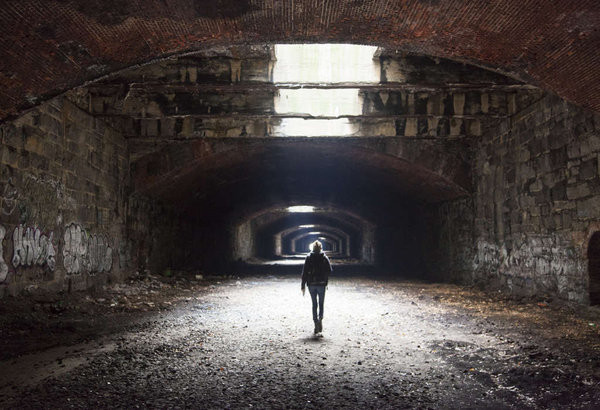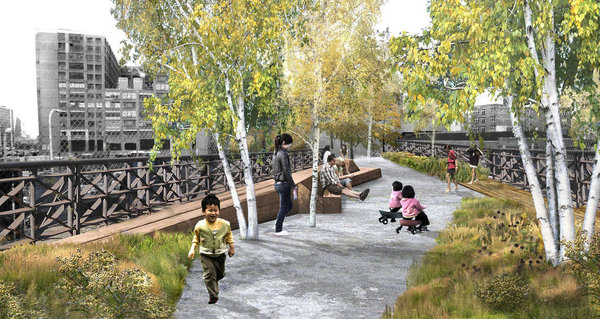In Philadelphia, railroad lines crisscrossing the city once ferried tons of coal from Pennsylvania’s coal fields to its industrial centers. As in so many cities around the world, much of that industrial infrastructure now lies defunct, giving rise to the question of how such spaces might be reclaimed, through adaptive reuse, for the public good.
As far as that question goes, New York City has set the bar high, so to speak, with the High Line. This iconic elevated rail-line-turned-park recently inspired London to host a design competition called, simply, High Line for London — which, incidentally, gave rise to some fascinatingly diverse proposals. But Philly’s got its own project going these days, which may create a park out of not just the elevated portions of its old Reading Railroad, but some subterranean portions as well.

Philly.com reports that Reading Railroad trains once roared through an urban canyon two blocks north of Vine Street, hauling coal to Philadelphia’s industrial belt. Those trains stopped running in 1992, when they delivered their last giant rolls of paper to the former Inquirer/Daily News building, and since then, nature has taken its course. Self-seeded plants along the railroad have created a landscape with an appeal of its own, according to advocates, who claim that with modest structural improvements, this stretch of the railroad could be repurposed as an extension of the Reading Viaduct Park, scheduled to complete construction drawings next year.
The Reading Viaduct park project was conceived of as literally bridging several diverse communities, in that it consists of a combination of embankment sections bridged by steel structures and arched masonry bridges, running 10 blocks through the Callowhill and Chinatown North neighborhoods, from Vine Street to Fairmount Avenue.

Now, if advocates have their way, there would be a low-line extension to that high line. The concept of a subterranean stretch of the park was first proposed by local resident Paul van Meter, who now offers guided tours of the proposed addition to the park. His vision has inspired a team of top designers to volunteer to sketch ideas for the belowground trail on the west side of Broad Street.
There’s only one problem with this big idea: a new city plan just earmarked the low-line trench for a high-speed bus route that would connect a string of cultural venues to the heart of downtown.
It’s not often that any city gets to choose between two equally seductive options for public infrastructure, but that’s the quandary Philadelphians now face. On the one hand, the park addition makes sense, in that it plays on a growing public fascination with the city’s industrial past.
For evidence of this, one need look no further than the late 19th and early 20th century industrial buildings that dot the landscape of the Reading Viaduct — which include former automobile, bicycle, shoe, glass and balloon factories, to name a few — that have attracted new investment, commercial development, and ever-increasing numbers of new residents in recent years. (The northeast leg of the park continues to 915 Spring Garden Street, the former Reading Company Building, which has been successfully redeveloped into fully occupied artists’ studios.)
On the other hand, it seems that in looking to the past, the city could miss an opportunity to plan for its future, in the form of mass transit.
So, what’ll it be, Philly: park, or ride?